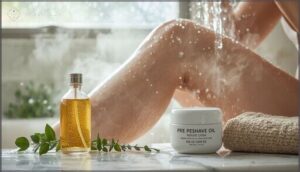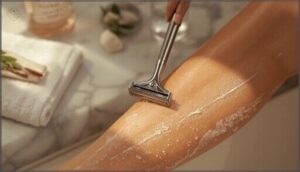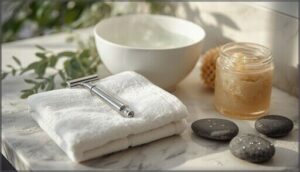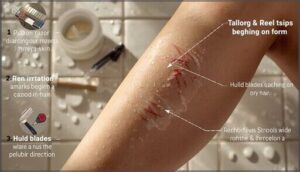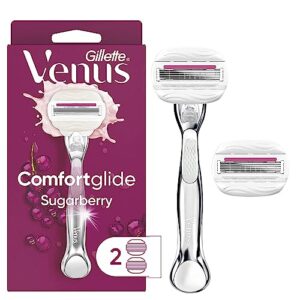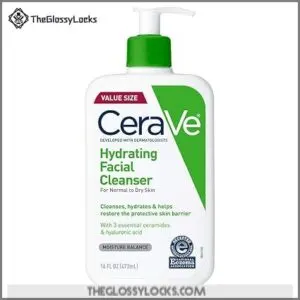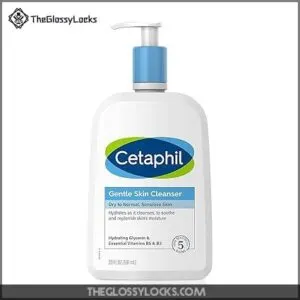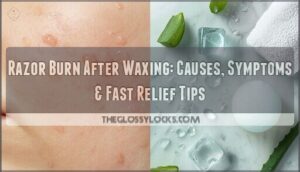This site is supported by our readers. We may earn a commission, at no cost to you, if you purchase through links.
Nearly everyone walks away from a shave nursing battle scars—a tiny nick behind the knee, a row of red bumps marching across your shin. It doesn’t have to be this way. When you understand the science behind shaving legs without cuts, you trade guesswork for confidence.
Consistent routines—thoughtful cleansing, careful exfoliation, steady hands—turn a chore into a ritual that protects as much as it reveals. With each stroke, you’re investing in smooth, healthy skin instead of gambling on fate and a dull blade.
Shaving without cuts is possible, and a few smart adjustments can put those unwanted souvenirs firmly in the past.
Table Of Contents
Key Takeaways
- Preparing your skin with gentle cleansing, regular exfoliation, and proper hydration before shaving significantly reduces the risk of nicks, irritation, and ingrown hairs.
- Shaving in the direction of hair growth, using short, controlled strokes, and rinsing the razor after every pass helps prevent cuts and supports smoother results.
- Choosing the right razor—whether a safety razor, cartridge with lubricating strips, electric model for sensitive skin, or a flexible-head manual razor—directly impacts comfort, safety, and the likelihood of irritation.
- Consistent post-shave care, including rinsing with lukewarm water and applying a moisturizer, is essential for maintaining skin barrier health and preventing dryness, razor burn, and infection.
Step-by-Step Guide to Shaving Legs Safely
Shaving your legs doesn’t have to be complicated or risky. Here’s a straightforward approach that puts your skin’s safety and comfort first.
Let’s walk through each step to help you get smooth results without the usual pitfalls.
Pre-shave Cleansing and Exfoliation
Before you even touch a razor, start with thorough cleansing—this cuts oil, bacteria, and buildup, laying a solid foundation for your skin care routine. Exfoliating your legs once or twice a week smooths rough patches, boosts circulation, and improves texture.
Pre-shave prep is important because it reduces friction and irritation. Pick gentle product ingredients for your skin type; consistent exfoliation helps prevent irritation and encourages a safer shaving technique.
Hydrating and Preparing The Skin
Once you’re finished exfoliating, don’t skip hydrating—this step can make or break your shave. Warm Water Benefits include softening hair shafts in just three minutes. Try Pre-Shave Oils or use moisturizers with skin-supportive ingredients like glycerin. Sensitive Skin Prep means choosing products wisely. Properly hydrated skin can help to avoid razor burn issues. The right Hydration Duration sets up smoother results, regardless of your skin type or shaving technique.
- Soak legs in warm water (three minutes)
- Apply pre-shave oil or lightweight moisturizer
- Focus on Moisturizer Ingredients—glycerin or sweet almond oil for best glide
- Tailor hydration to your Skin Type, especially if sensitive
Applying Shaving Cream or Gel
Right after hydrating, smooth on a shaving cream or gel—think thin, even coverage that’s barely opaque. Cream vs. Gel isn’t just splitting hairs: gels usually glide better, giving added protection for sensitive skin.
Give it a minute to soften hair before shaving your legs. Watch out for fragrances if you struggle with ingredient sensitivity or irritation.
Shaving in The Direction of Hair Growth
When you’re aiming to minimize irritation and reduce nicks, focus on shaving in the direction of hair growth. This simple technique aids ingrown prevention and helps preserve your skin’s natural barrier.
For most, that means shaving legs from ankle to knee using gentle, short strokes—your razor glides easier, following the grain. Dermatological guidance supports this for smoother results and healthy hair texture.
Rinsing and Moisturizing After Shaving
Once you’ve finished shaving, thorough postshave care protects your skin barrier. Rinse your legs with lukewarm water to remove product buildup—avoid hot water to limit irritation and dryness. Then:
- Pat dry to minimize skin irritation.
- Moisturize promptly for best skin hydration and repair.
- Maintain regular postshave skin care to guard against bacterial prevention and recurring dryness.
Choosing The Best Razor for Smooth Legs
Choosing the right razor is half the battle for smooth, safe legs. Each razor type brings its own benefits and challenges, depending on your skin and hair.
Let’s break down the most effective options to help you find your best fit.
Safety Razors and Single-blade Options
Looking for unparalleled shave closeness and fewer bumps? A safety razor with a single sharp blade is your ally. It glides with precision, reducing razor burn and skin micro-cuts while slashing the risk of ingrown hairs.
Mastering a steady 30–40 degree blade angle transforms shaving your legs from a gamble into a safe, satisfying ritual of control.
Cartridge Razors With Lubricating Strips
Everyday comfort matters when shaving your legs, and cartridge razors with lubricating strips lead the pack—claiming 38% of the market. These strips contain skin-friendly ingredients that boost hydration, soothe irritation, and drive up shaving comfort ratings.
With advances in razor blades:
- Friction drops for fewer cuts.
- Razor disposal programs expand.
- Awareness grows about microplastic pollution and safe shaving tips and tricks.
Electric Razors for Sensitive Skin
Imagine shaving with a tool designed to outsmart irritation—premium electric razors for sensitive skin are just that. Whether you lean foil or rotary, prioritize hypoallergenic materials and pressure sensitivity.
Gentle cleaning after each use preserves battery performance and ensures hygiene. Compared to manual razors, electric models help reduce nicks, but smart shaving techniques and careful skin care still matter for lasting comfort.
Manual Razors With Flexible Heads
Think of manual razors with flexible, pivoting head designs as your insurance policy against nicks. These razors pivot to hug every curve, improving blade-skin contact and user comfort. Friction reduction matters, especially for sensitive areas. In fact, market growth shows that shaving your legs safely and smoothly with flexible head razors is now the best practice in razor safety.
- Conforms to knees and ankles for fewer missed spots
- Distributes pressure evenly, minimizing irritation
- Blade-skin contact reaches up to 95% on curves
- Friction reduction decreases post-shave redness
Essential Pre-Shaving Preparation Tips
Before you reach for your razor, a little groundwork pays off in smoother, safer results.
Your skin’s ready to cooperate if you take a few simple steps beforehand. Here’s what to focus on for the best start.
Selecting Gentle Cleansers for Skin Type
Choosing the right cleanser before shaving your legs isn’t just a Skin Care basic; it’s your first line of defense against Skin Irritation. Look for syndet options over traditional soap—these match your skin’s pH and reduce Lipid Removal Risk.
Fragrance Sensitivity matters, too. Cream textures offer comfort for dry types, while gels help manage oil, balancing Skin and Hair Care needs.
Importance of Exfoliation to Prevent Ingrown Hairs
Once your skin is prepped with the right cleanser, exfoliating 2–3 times a week clears dead skin cells that block follicles—a key mechanism behind stubborn ingrown hairs.
This step smooths the surface for shaving, improving glide and lowering your risk of razor burn or irritation. Gentle, circular motions and alternating methods offer the best results without overdoing exfoliation frequency.
Using Pre-shave Oils or Moisturizers
That smoothness you’re after starts before the razor ever touches your skin. Oil vs Moisturizer comes down to how you want to prep: lightweight pre-shave oils layer in protection, while moisturizers support supple skin.
When Shaving Your Legs, try these:
- Focus on ingredient benefits—look for Vitamin E or jojoba.
- Match your product to your skin type.
- Use deliberate application techniques for complete shaving safety and post-shave synergy.
Softening Leg Hair With Warm Water
Once you’ve applied your pre-shave oil or moisturizer, let warm water do the heavy lifting. A 2–3 minute soak at the best temperature (100–110°F) softens leg hair, improving razor glide and reducing nicks. This quick routine works wonders for skin sensitivity and smoothness.
| Best Temperature | Exposure Duration | Shaving Impact |
|---|---|---|
| 100–110°F | 2–3 minutes | Fewer cuts, smoother results |
| 95–100°F | For dry/sensitive skin | Gentler on skin |
| >120°F (avoid) | — | Risk of irritation |
| Warm towel | 1–2 minutes | Quick hair softening |
Common Shaving Mistakes to Avoid
Even a careful routine can unravel if you overlook a few easy-to-miss steps. Some mistakes crop up more often than you’d expect and can leave skin irritated or nicked.
Here’s what to watch out for next time you shave.
Using a Dull or Old Razor
Ever wonder why your legs itch or sting after shaving? Using a dull razor ramps up infection risks, encourages blade degradation, and turns shaving discomfort into reality. Razor burn, bumps, and ingrown hairs become more likely, too.
For lasting smoothness, replace blades regularly—it’s your first line of shaving safety and precaution. Sharp razors make all the difference for comfort and healthy skin.
Shaving Too Quickly or With Long Strokes
If you cut corners by rushing or using long strokes, you’re raising the odds of nicks and irritation. Rushed Shaving Risks and Stroke Length Impact include:
- More Speed-Related Injuries, especially for women aged 19-28
- Invisible abrasions needing extra care
- Shaving Tips: Short, controlled strokes beat fast ones
- Shaving Safety: Never trade technique for a few seconds saved
Not Rinsing The Razor Frequently
If you don’t rinse your razor after every stroke, you’re piling on risk: blade clogging, skin irritation, and higher cut rates. Shaving comfort drops, razor dullness sets in, and you’re likely to make more passes over the same spot. For better shaving safety and smoothness, rinsing often remains a simple—yet key—piece of razor maintenance.
| Risk | What It Causes | Shaving Tip |
|---|---|---|
| Blade clogging | Cut risk increase | Rinse after every stroke |
| Razor dullness | More tugging, drags | Replace blades regularly |
| Skin irritation | Red bumps, soreness | Keep razor clean and clear |
Skipping Post-shave Skin Care
After shaving, your legs need more than a towel-off—they need real skin care. Without moisturizing, dryness and irritation settle in, opening the door to razor burn, ingrown hairs, and a weakened skin barrier.
Skip soothing products, and you’re slowing recovery, raising your risk for lingering redness, bumps, and even long-term complications that keep your skin from feeling truly smooth.
Top 3 Products for Cut-Free Leg Shaving
Finding the right products can make all the difference between a smooth shave and a patchwork of nicks. The best tools support both safety and comfort, letting you focus on the results instead of the risk.
Here are three products that consistently help you keep cuts at bay.
1. Venus Comfortglide Olay Sugarberry Razor
A close shave shouldn’t feel like threading a needle. The Venus Comfortglide Olay Sugarberry Razor checks off every box—metal handle durability, a pivoting head that hugs every curve, and five sharp blades for smooth leg shaving.
Its sugarberry scent transforms routine grooming, while Olay moisture bars keep skin hydrated and cut-free. Although some mention moisture bar longevity as a drawback, swapping blades every three to four weeks maintains peak razor safety.
In short, it’s a standout for shaving and grooming with serious shaving safety and precautions.
Best For: Anyone looking for a smooth, close shave with extra skin hydration and a hint of berry scent.
- Five blades and moisture bars offer a close, silky shave with fewer nicks.
- Built-in Olay bars keep skin hydrated, so you can skip shaving cream.
- The pivoting metal handle is sturdy, easy to grip, and glides along curves.
- Moisture bars wear out faster than the blade itself.
- Not compatible with all Venus handles (excludes Simply Venus and Venus Pubic Hair Razor).
- Some users find the moisture bars bulky for tricky spots.
2. CeraVe Hydrating Daily Facial Cleanser
Ever wondered how to keep your legs smooth without risking razor burn? CeraVe Hydrating Daily Facial Cleanser does more than just cleanse—it preps your skin for shaving safety and precautions.
Packed with ceramides and hyaluronic acid, it locks in hydration and strengthens your skin barrier, making it ideal for sensitive skin and non-comedogenic routines.
Dermatologist recommended, this cleanser softens hairs and aids skin care and maintenance, letting your shaving cream glide on easily, giving you fewer bumps and a gentler leg shaving experience.
Best For: People with normal to dry, sensitive, or eczema-prone skin who want a gentle, hydrating cleanser that supports the skin barrier.
- Delivers deep hydration without leaving skin feeling tight or dry
- Soothes and restores skin with ceramides and hyaluronic acid
- Non-irritating, fragrance-free, and safe for daily use—even for sensitive skin
- May not fully remove heavy makeup or sunscreen in one wash
- Might feel too creamy for those with oily skin
- Rare reports of receiving damaged packaging or non-genuine product
3. Cetaphil Gentle Skin Cleanser Hydrating Wash
Think your legs need backup against nicks and redness? Cetaphil Gentle Skin Cleanser Hydrating Wash is more than just mild—it’s engineered for sensitive skin, proven in clinical studies to boost hydration without weighing skin down.
Its key ingredient benefits—glycerin for hydration, niacinamide, and panthenol—strengthen your barrier while making Shaving Cream glide effortlessly.
User reviews praise its soothing touch and gentle cleansing during leg shaving, and its hydration properties fit seamlessly into any shaving techniques and tips for daily skin care and maintenance.
Best For: People with sensitive, dry, or easily irritated skin who want a gentle, hydrating cleanser safe for daily use—including shaving prep and aftercare.
- Clinically proven to keep skin hydrated and support the skin barrier
- Non-irritating, hypoallergenic, and recommended by dermatologists for sensitive conditions
- Fragrance-free, soap-free, and suitable for both face and body
- May not remove heavy makeup or sunscreen without double cleansing
- Texture can feel non-foaming or slimy, which some users dislike
- Recent formula changes (niacinamide, panthenol) may irritate a small number of users
Frequently Asked Questions (FAQs)
How can I soothe razor burn on legs?
Has razor burn left you with red bumps and irritation? Soothe your skin with a cold compress, aloe vera, or oatmeal baths; topical hydrocortisone cream helps, too.
Most redness and ingrown hairs improve within three days.
What’s the best way to store razors hygienically?
Store your razor upright in a dry, open-air stand, away from bathroom humidity, to limit bacterial risks.
Clean it after every use, cover it with a ventilated guard, and replace blades regularly for best hygiene and razor safety.
How often should razors be disinfected?
How often do you pause and consider just how quickly bacterial growth can overtake your daily tools?
For Razor Safety and Maintenance, aim for disinfection at least weekly—using proper Hygiene Practices and disinfectant types guarantees peak Razor Care and Infection prevention.
Are there natural remedies for ingrown hairs?
If you’re battling ingrown hairs, natural remedies like tea tree oil, warm compresses, aloe vera, gentle natural scrubs, and witch hazel can help. These remedies reduce irritation, prevent razor burn, and support skin health after hair removal and shaving.
Can shaving lead to permanent skin discoloration?
Shaving can cause permanent skin discoloration—known as PIH—especially in dark skin, due to melanin overproduction triggered by shaving trauma or irritation.
Practicing PIH prevention with shaving and skin care steps can reverse discoloration and protect skin health.
Conclusion
If perfect skin existed in legend, mastering shaving legs without cuts would be its secret passage—a routine you carve, not just for aesthetics, but for true confidence in your stride.
With the right tools and a little patience, nicks and razor burn fade into distant memories, no longer dictating your approach.
Now, each shave is purposeful and protective, transforming what once felt ordinary into a ritual of self-assurance. Smoothness is no myth; it’s a choice you make, every time.
- https://pubmed.ncbi.nlm.nih.gov/27596260/
- https://www.reddit.com/r/science/comments/1vtnby/analysis_of_emergency_room_data_show_that_pubic/
- https://pureshave.co.uk/prevent-and-treat-shaving-cuts/
- https://hoffmansgrooming.com/blogs/blog/how-to-avoid-shaving-cuts-and-nicks
- https://www.medicalnewstoday.com/articles/322858



